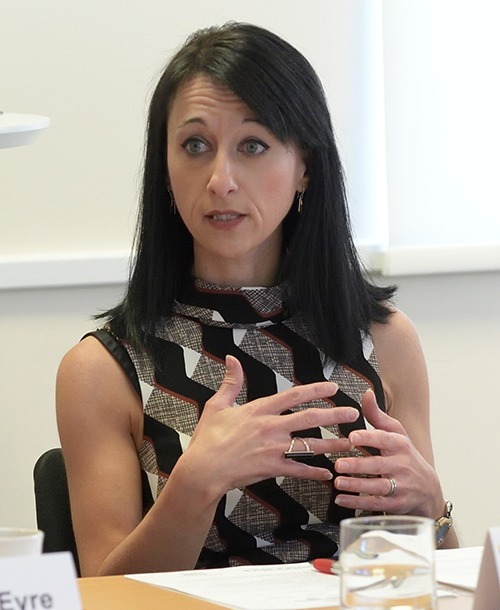 We caught up with Lucia Di Stazio, Non-Executive Director at MRA Marketing, 20 times winner of the Construction Marketing Awards who, along with many others in the industry is helping to redress the gender imbalance.
We caught up with Lucia Di Stazio, Non-Executive Director at MRA Marketing, 20 times winner of the Construction Marketing Awards who, along with many others in the industry is helping to redress the gender imbalance.
According to the Smith Institute’s ‘building the future: women in construction’ report, women account for only 11% of the construction workforce and just one per cent of workers on site.
How did your career path take you into the construction industry?
I hadn’t set out for a career in construction – in fact, my route into this ever-changing, and at times, challenging sector wasn’t exactly conventional!
My parents moved to the UK from Southern Italy in the late ‘60s and settled on the edge of the Cotswolds, where I grew up with my two older brothers. Speaking fluent Italian, I developed a passion for languages and had originally planned to study at university, but the environment didn’t suit me, and I returned home within a matter of weeks.
I joined a local newspaper for two years, until, in 1997 I saw an advert for a research assistant with Michael Rigby Associates, which we now know as MRA Marketing. I didn’t know anything about research, let alone the construction industry, but I went for it and much to my surprise, I was offered the job.
The first six months were hard. I didn’t really understand what I was doing, but I stuck with it. Fast forward five years and I was heading up the research division! By this time the business had expanded and in 2007 I asked Mike, our CEO if I could move across to the marketing team.
Two years later I was appointed a Board Director, and then Managing Director of MRA Marketing.
I’m proud to have played a pivotal role in MRA’s development into a full-service agency; in 2015 MRA reached No.1 in the Construction Marketing Awards agency league, a spot we held for five years.
What steps should the industry make to ensure career success for women?
I’ve been very fortunate to work for a business that encourages development and progression regardless of gender. So, I have never felt that our sector has consciously excluded women or stifled progression, but I recognise my experience may not be the norm.
It is incumbent on all of us who work in the industry to recognise the need for change. When I first came into the industry, women were in the minority, especially around the board table. At events, it was a sea of men in grey suits. Now, it’s much more diverse.
The industry still has an image problem and suffers from low awareness. This will take time to change but it’s vital we keep striving to be better and to make it easier for all our employees – by building a flexible working environment and demonstrating the huge potential in career development.
If you feel you can do it, do it. Regardless of gender, give the job time to develop and don’t be impatient. Construction is a fantastic people industry. There is much to learn, and there’s so much variety – each day is different.
After a longstanding career with MRA, you are moving on to explore opportunities client side. What are your future career ambitions?
My time with MRA has been so rewarding. I’ve learnt so much, experienced huge amounts, and had lots of fun along the way. The business is in a great place and there’s a fresh team to drive it into its next phase.
Working in a full-service agency you learn very broad skills, gain exposure to different sectors and different types and sizes of business, and acquire extensive knowledge and experience. Having helped many of my customers to grow, I’m relishing the opportunity to work in-house and really focus on helping one business achieve great things.
I would say one of the most empowering things you can do, is to just go for it! Whatever path you take, believe in yourself, have clear goals and stay focused.
What is your outlook for the construction industry in 2022?
In March 2020, the Government deemed the construction sector to be essential and encouraged it to stay open. This triggered a boom in RMI and new house building that hasn’t eased.
Despite difficulties in supply, I expect demand will remain high well into 2022 and beyond. Many people have decided to remain working from home and many others are escaping city life for a different work-life balance. This mass migration is likely to keep construction busy for the next ten years or so.
Let’s use this opportunity to demonstrate that construction is an attractive industry to work in, with the best opportunities for learning, training and building careers.


Recent Comments